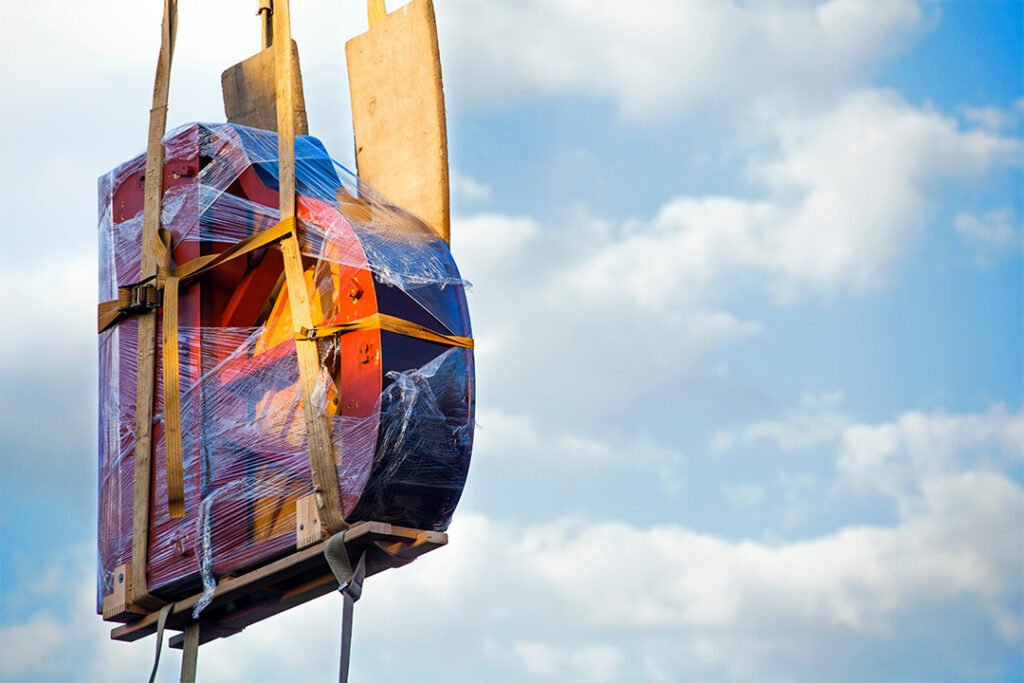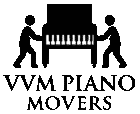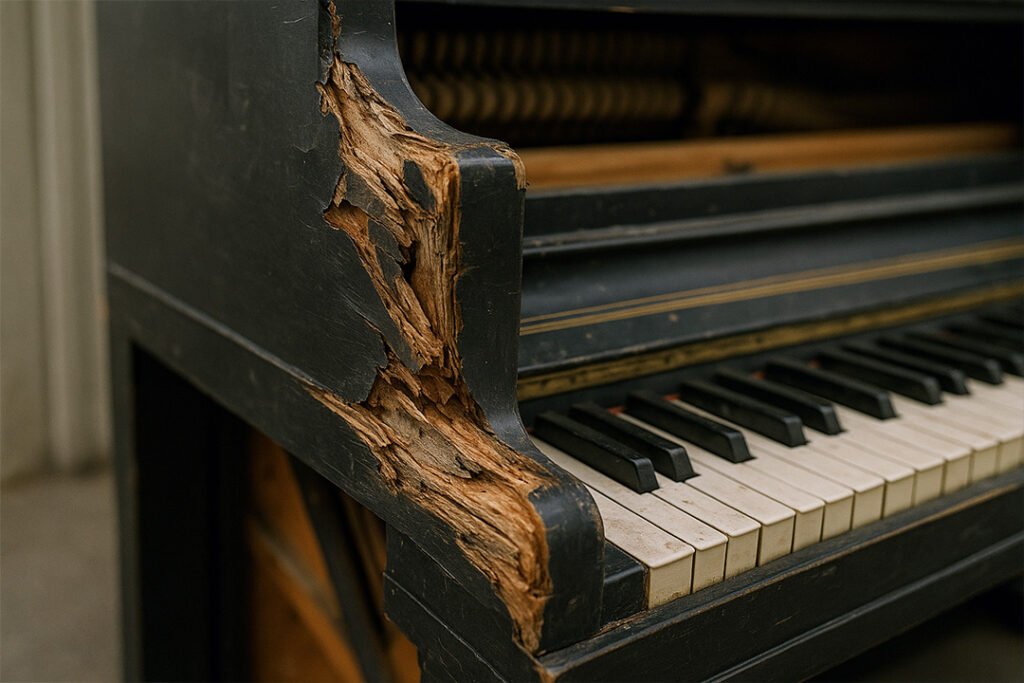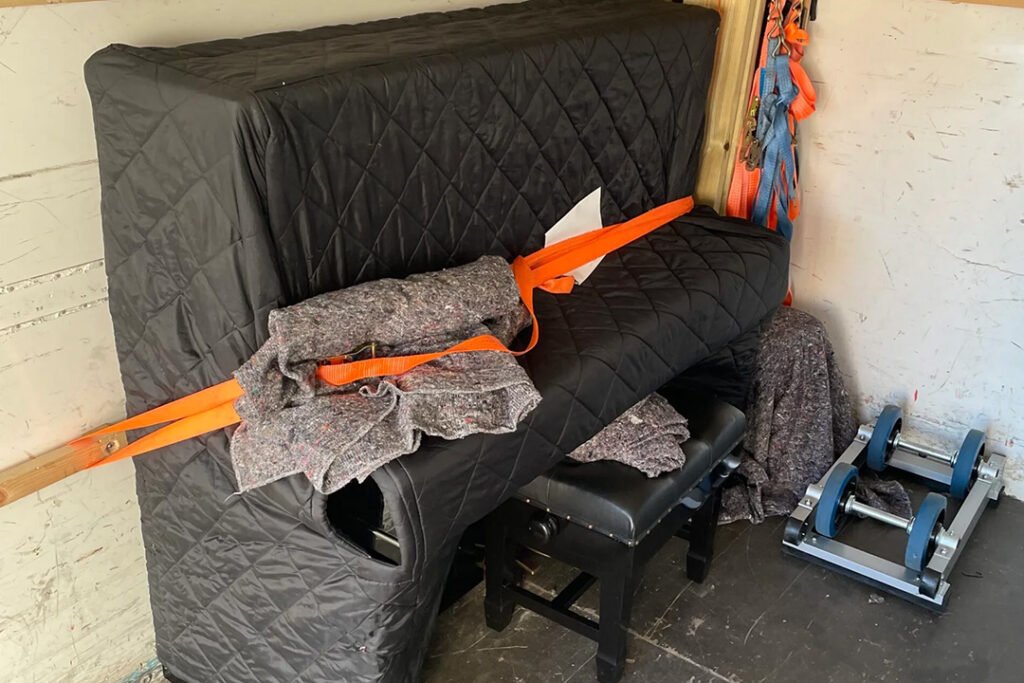
Moving a piano is a complex task that requires careful planning, specialised equipment, and often professional help to ensure safety and prevent damage. This guide outlines the challenges, equipment, steps, and considerations involved in moving a piano, highlighting the benefits of hiring professionals.
Table of Contents
Understanding the Challenges of Piano Moving
Moving a piano is a complex task that goes beyond simply shifting a large piece of furniture. These majestic instruments are not only heavy, with most acoustic pianos weighing over 200kg, but they are also awkwardly shaped, making them difficult to manoeuvre through tight spaces.
The sheer weight and size of pianos necessitate a team effort; grand pianos typically require at least six people to move, while upright pianos need at least four.
The risks associated with DIY piano moving are significant. These accidents can result in serious injuries such as back strains, crushed fingers, and falls, as well as potential damage to the piano itself or your property. Pianos are delicate instruments with thousands of intricate parts, and improper handling can lead to costly repairs or even replacement of damaged components.
- Weight and size considerations vary by piano type.
- Risk of personal injury and instrument damage is high.
- Multiple people and specialised equipment are necessary.
- Navigating stairs and tight spaces adds complexity.
Essential Equipment for Safe Piano Moving
Moving a piano safely requires more than just manpower; specialised equipment is crucial to prevent accidents and damage. With most acoustic pianos weighing over 200kg, it’s essential to use the right tools to ensure a smooth and safe move. Professional piano movers rely on these tools to protect both the instrument and the surroundings.
- Piano Dolly: A heavy-duty wheeled platform designed to support the piano’s weight and make it easier to manoeuvre.
- Piano Shoes: Protective covers that slip over the piano’s legs to prevent scratches and provide a better grip.
- Skid Boards: Used to slide the piano safely across floors and down stairs, reducing the risk of tipping.
- Padded Covers: Thick blankets that wrap around the piano, shielding it from bumps and scratches during the move.
- Straps and Harnesses: Used to secure the piano to the dolly and provide lifting points for the movers.
- Ramps: Essential for navigating stairs and uneven surfaces, ensuring a steady and controlled descent.
Step-by-Step Guide to Transfer a Piano Safely
Moving a piano is a challenging task that requires careful planning and execution to prevent injury and damage. Follow these detailed steps to ensure a safe and efficient move.
- Gather a team: For an upright piano, enlist at least four strong individuals, while a grand piano may require six or more. This ensures adequate support and reduces the risk of injury or damage.
- Prepare the path: Measure doorways, hallways, and staircases to ensure the piano can pass through without obstruction. Remove any potential hazards along the way, such as rugs or furniture.
- Use proper equipment: Essential tools include moving blankets, straps, a piano dolly, and gloves. These help protect both the piano and your property during the move.
- Lift with care: Position your team strategically around the piano. Always lift with your legs, not your back, to prevent strains. Ensure everyone communicates clearly and is coordinated during the move.
- Navigate stairs safely: Use ramps and skid boards when moving the piano up or down stairs. Position helpers strategically to maintain balance and control.
- Secure the piano: Once in the moving vehicle, make sure the piano is securely fastened to prevent shifting during transit. Use additional padding to protect the piano from bumps and vibrations.
The Case for Hiring Professional Piano Movers
Hiring professional piano movers is a prudent decision given the complexities and risks associated with moving these heavy and delicate instruments. Most acoustic pianos weigh over 200kg, necessitating not only physical strength but also expertise and specialised equipment to ensure their safe transport.
Professional movers are equipped with essential tools such as piano shoes, skids, and padded covers, which help prevent damage during the move. Their experience allows them to efficiently navigate challenging spaces like narrow passages and staircases, significantly reducing the risk of accidents.
A key advantage of hiring professionals is the insurance and liability coverage they provide. This coverage offers peace of mind, ensuring that any potential damage during the move is accounted for, unlike DIY attempts where the risk and cost of damages fall entirely on you.
- Use of specialised equipment like piano shoes and skids for safe handling.
- Insurance and liability coverage protect against potential damages.
- Expert navigation of narrow passages and staircases.
Cost Considerations for Piano Moving
When planning to move a piano, it’s essential to evaluate the costs associated with hiring professional movers versus attempting a DIY move. Professional piano movers typically charge either an hourly rate or a set fee, often with minimum charges. While this may seem expensive initially, it is often justified by the expertise and specialised equipment they provide, which significantly reduces the risk of damage.
In contrast, a DIY approach might appear more economical at first, but it carries substantial risks. The potential costs of repairing a damaged piano or property can quickly surpass the savings from not hiring professionals. Additionally, professional movers offer insurance and liability coverage, ensuring that any accidental damage is covered, providing peace of mind during the move.
- Professional movers: Higher upfront cost, includes insurance and expertise.
- DIY moving: Initially cheaper, but risks costly damage to piano and property.
- Insurance and liability coverage are included with professional services.
Aftercare: Ensuring Your Piano is in Top Shape Post-Move
Once your piano has been safely relocated, it’s crucial to ensure it remains in optimal condition. Moving can affect a piano’s delicate components, making tuning and inspection essential. The jostling and temperature changes during the move can impact its strings and frame, potentially affecting sound quality and the instrument’s overall health.
- Schedule a piano tuning with a qualified technician to maintain sound quality.
- Inspect the piano for any signs of damage or misalignment that might have occurred during transport.
- Consider scheduling regular maintenance to keep your piano in top form.
Frequently Asked Questions
What are the risks of moving a piano by myself?
DIY piano moving can lead to serious injuries like back strains and crushed fingers, and can also damage the piano or property.
What equipment is necessary for moving a piano?
Essential equipment includes a piano dolly, piano shoes, skid boards, padded covers, straps, harnesses, and ramps.
Why should I hire professional piano movers?
Professional movers offer expertise, specialised equipment, and insurance coverage, reducing the risk of damage and providing peace of mind.
How much does it cost to hire professional piano movers?
Costs vary but typically include an hourly rate or set fee. While initially higher, it includes insurance and reduces the risk of costly damage.
What should I do after moving my piano?
Schedule a tuning session, inspect for damage, and consider regular maintenance to ensure your piano remains in top condition.


